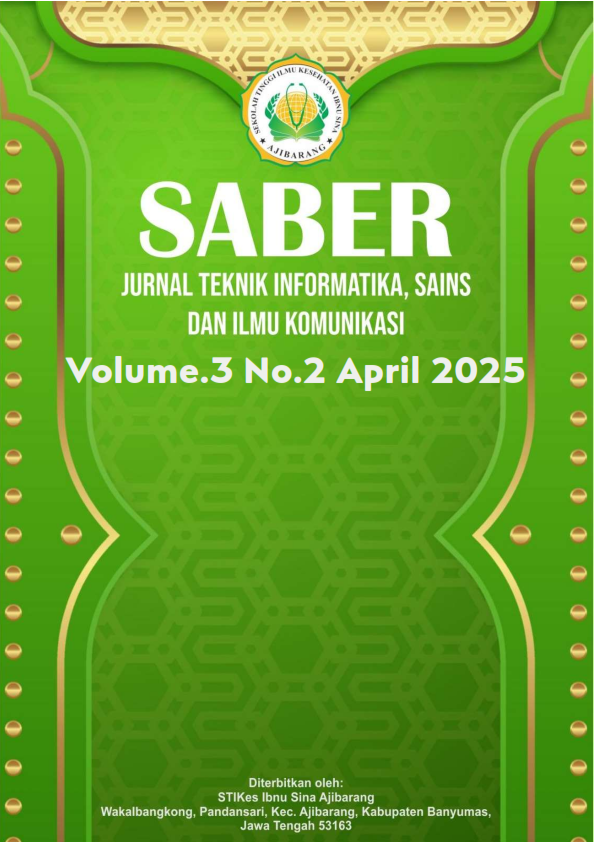Pengembangan Media Pembelajaran Menggunakan Lumio By Smart pada Mata Pelajaran TIK Siswa Kelas VII SMP Negeri 37 Samarinda
DOI:
https://doi.org/10.59841/saber.v3i2.2390Keywords:
ADDIE, ICT, Learning Media, Lumio By SmartAbstract
This research is based on the fact that the ICT learning process still uses conventional methods and a lack of interesting learning media, resulting in students having difficulty understanding the material presented by the teacher. The aim of this research is to develop and test the feasibility of learning media using Lumio By Smart in ICT subjects for class VII students at SMP Negeri 37 Samarinda. The type of research used is development research with the ADDIE development model. Data collection techniques used observation, interview and questionnaire methods. The data analysis techniques used are qualitative analysis and quantitative analysis. The research subjects involved were 3 media experts, 1 material expert and 26 students. The results of the research showed that learning media products using Lumio By Smart were declared very suitable for use, as evidenced by the feasibility test of learning media by material experts, an average score of 4.23 was obtained in the Very Appropriate category, by media experts an average score of 12 was obtained. 82 in the Very Appropriate category, according to student assessment an average score of 116.30 was obtained in the Very Appropriate category, and the assessment from all validators obtained an average score of 39.97 in the Very Appropriate category
References
Alessi, S. M., & Trollip, S. R. (2001). Multimedia for learning: Methods and development (3rd ed.). Allyn & Bacon.
Anderson, L. W., & Krathwohl, D. R. (2001). A taxonomy for learning, teaching, and assessing: A revision of Bloom's taxonomy of educational objectives. Longman.
Branch, R. M. (2009). Instructional design: The ADDIE approach. Springer.
Clark, R. C., & Mayer, R. E. (2016). E-learning and the science of instruction: Proven guidelines for consumers and designers of multimedia learning (4th ed.). Wiley.
Gagné, R. M., Wager, W. W., Golas, K. C., & Keller, J. M. (2005). Principles of instructional design (5th ed.). Wadsworth.
Mayer, R. E. (2009). Multimedia learning (2nd ed.). Cambridge University Press.
Mishra, P., & Koehler, M. J. (2006). Technological pedagogical content knowledge: A framework for integrating technology in teacher knowledge. Teachers College Record, 108(6), 1017–1054.
Molenda, M. (2003). In search of the elusive ADDIE model. Performance Improvement, 42(5), 34–37. https://doi.org/10.1002/pfi.4930420508
Sapriyah. (2019). Media pembelajaran dalam proses belajar mengajar. Diklat Review: Jurnal Manajemen Pendidikan dan Pelatihan, 2(1), 470–477. https://doi.org/10.35446/diklatreview.v3i1.349
Seels, B., & Richey, R. C. (1994). Instructional technology: The definition and domains of the field. Association for Educational Communications and Technology.
Smaldino, S. E., Lowther, D. L., & Russell, J. D. (2019). Instructional technology and media for learning (12th ed.). Pearson.
Wardatul Janah, S., Surani, D., & Fricticarani, A. (2023). Pengaruh penggunaan media presentasi Lumio By Smart pada mata pelajaran aplikasi pengolah angka dalam meningkatkan pola pikir kritis siswa di kelas VII MTs Al-Khairiyah Pipitan. Journal on Education, 6(1), 8041–8047. https://doi.org/10.31004/joe.v6i1.4217
Wiggins, G., & McTighe, J. (2005). Understanding by design (Expanded 2nd ed.). ASCD.
Zahrah, N. A. (2023). Pemanfaatan media Lumio by SMART dalam pembelajaran menulis teks iklan siswa kelas VIII SMP Negeri 14 Jakarta tahun pelajaran 2023/2024. Αγαη, 15(1).
Zhang, D., Zhou, L., Briggs, R. O., & Nunamaker, J. F. (2006). Instructional video in e-learning: Assessing the impact of interactive video on learning effectiveness. Information & Management, 43(1), 15–27. https://doi.org/10.1016/j.im.2005.01.004
Downloads
Published
How to Cite
Issue
Section
License
Copyright (c) 2024 SABER : Jurnal Teknik Informatika, Sains dan Ilmu Komunikasi

This work is licensed under a Creative Commons Attribution-NonCommercial-ShareAlike 4.0 International License.








